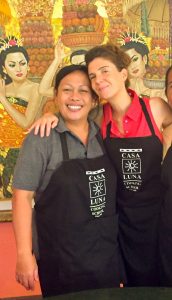Yukde or the culinary artistic coup de coeur!

There are artistic encounters, other gourmands, and others still touching… and then, there are those that are all this at once! Yukde is our great “culinary artistic” coup de coeur that we wanted to share with you. Indeed, My O’BE, it’s a promise of unique art but it is also the sharing of our most beautiful artistic discoveries…
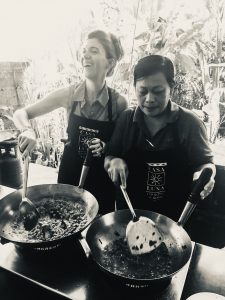
The art of Balinese cuisine is a full-fledged art on the island where Balinese women find their most beautiful and talented way of expression.
Yukde started working for Janet de Neefe more than fifteen years ago now. Janet, an Australian who set up an empire in Ubud and is nicknamed “The Queen of Bali”, immediately detected the potential of this talented young woman. Little by little, she let her climb the ladder to the point of becoming now her cook at the Casa Luna, one of her establishments. This is where Yukde composes her dishes, reflects on the new recipes and she is responsible for teaching the virtues of food “health.” From then on, we offer you a journey of senses and taste buds through this whirlwind of spices and miracle foods that Yukde has presented to us…
Scented seeds and nuts
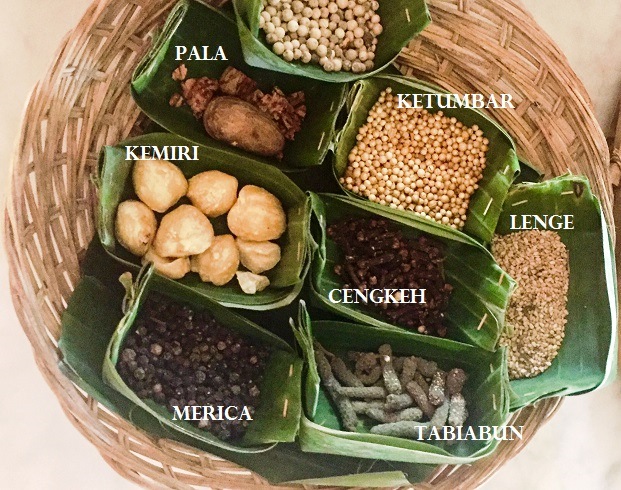
KEMIRI
The Kemiri… Apparently, it looks like macadamia nuts. It is mainly used in Malay and Indonesian cuisine, crushed and mixed with other spices, fresh or dried, to thicken sauces and to prepare curry pasta.
CENGKEH
The Clove… Clove or clove is a tree of the Myrtaceae family from Indonesia. The tree has a conical shape. With an average height of 10 to 12 m, it can reach up to 20 m high. It is indispensable to most curries.
KETUMBAR
Coriander seeds… The annual herbaceous plant of the Apiaceae family. It is grown in temperate areas around the world and used for many culinary preparations, especially in Indonesia. The leaves are usually used fresh in accompaniment or as a condiment. Dried fruits, often confused with seeds, are used as a spice. Ground, they are a basic ingredient of many mixes, such as curries. Coriander is also a medicinal plant, which is recognized in particular to facilitate digestion.
PALA
The nutmeg… It originates from the Moluccas and New Guinea islands. This spice is actually a seed, the inner part of the fruit of the Myristica fragrans. Myristica Fragrans is a tree native to Indonesia that grows in tropical regions. In the market, nutmeg is already ground or whole seeds (brown or white). In order to best appreciate the flavor and beneficial properties of nutmeg, it is recommended to grate the whole nut at the moment of consumption. The nutmeg helps to overcome fatigue, thanks to its tonic virtues for the heart and the circulatory system. In external use, in the form of oil, nutmeg is known to relieve sensitive pain and rheumatism.
LENGE
The sesame seed… It is grown in Asia, and it is in the Middle East that it has the most success. Small in size, however, it contains an excellent content of vitamins, iron, antioxidants. Sesame is an oil plant, which means that its seeds are rich in fats and essential fatty acids that are not naturally synthesized by the organism. They prevent the body from cardiovascular disease, some cancer and type 2 diabetes. Their antioxidant power is made possible by their gamma-tocopherol composition. Also, their vitamin E content could reduce the risk of certain cancers.
Other known seeds…
Balinese cuisine also uses the other best known seeds such as Erica (Pepper) and TABIABUN (Long pepper).
Roots and shoots
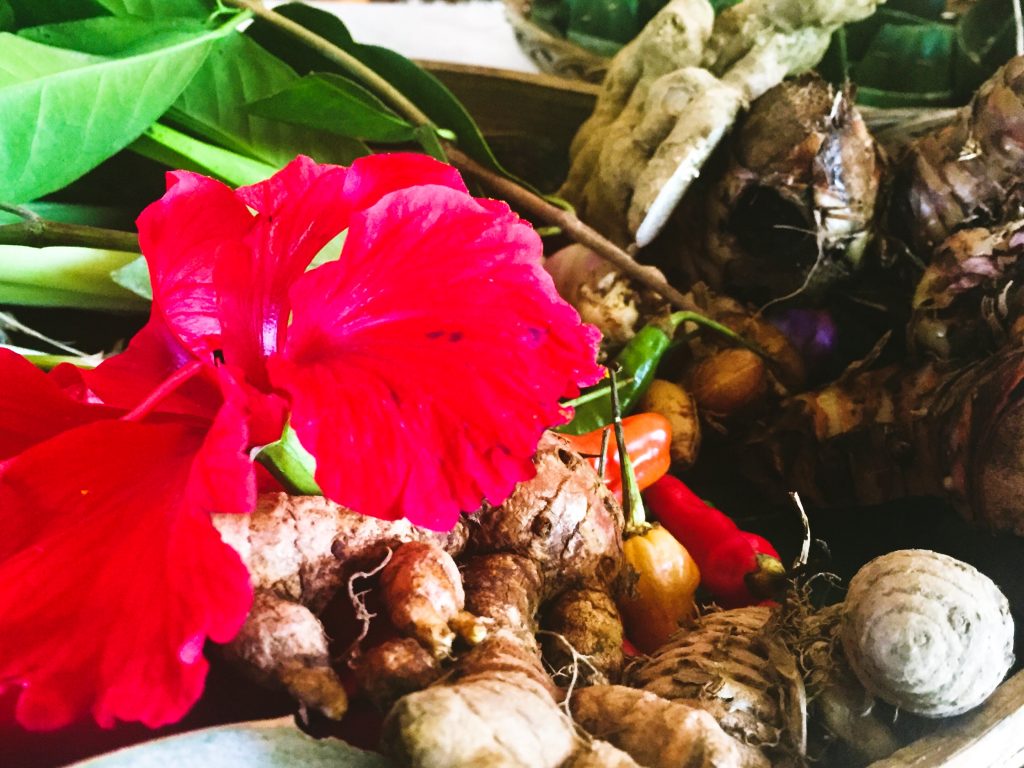 Do you know that there is a wide variety of ginger?
Do you know that there is a wide variety of ginger?
GALANGA
The Galangal… it is a plant originating in Asia of the same family as ginger. It is traditionally used to stimulate appetite, fight nausea, reduce rheumatic pain or osteoarthritis. The essential oil is tonic, stomachic and stimulating.
JAHE
Ginger… It is antibacterial, it helps to warm the organism, it stimulates the immune system, it is antiallergic and antipyretic (it fights fever). Above all, Ginger is an anti-nausea that limits vomiting, especially those related to transport and pregnant women.
KENCUR
Aromatic ginger… it is one of the common herbs in Indonesian kitchens as well as traditional Jamu drinks. It is mainly found in open areas in Indonesia, South China, Taiwan and Cambodia. Kencur is the main plant used in several Indonesian dishes like pfur (mixed vegetables with seasoned grated coconuts), Pecel, Rempeyek (traditional Indonesian peanut crackers) and a number of vegetable recipes sauted. Its distinct aroma really characterizes these dishes. He’s a real energy booster.
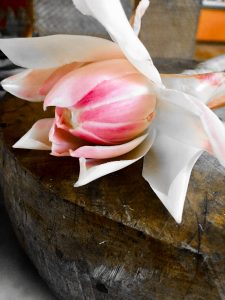
BONGKOT
Ginger Torch… grown in Southeast Asia, it is a spectacular food. The stems of the flowers are cut and added to curry or rice noodle soups. In Bali, both the young shoot (Bongkot) and Bud (Kecicang) are used in the kitchen. The bud is eaten raw in some mixes or added to curries and soups. The flower can be ground in a paste.
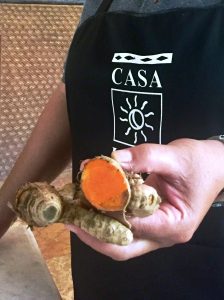
KUNYIT
Turmeric… It is a perennial, herbaceous, short-stemmed plant that can reach a height of 1 meter. It has many aromatic, ellipsoid or cylindrical rhizomes, yellow to orange inside. Turmeric, the main ingredient in curries, is particularly present in Indonesian flavors. It is used in the Balinese to prepare their miraculous drink: the Jamu
The other beautiful flavors of Indonesia…
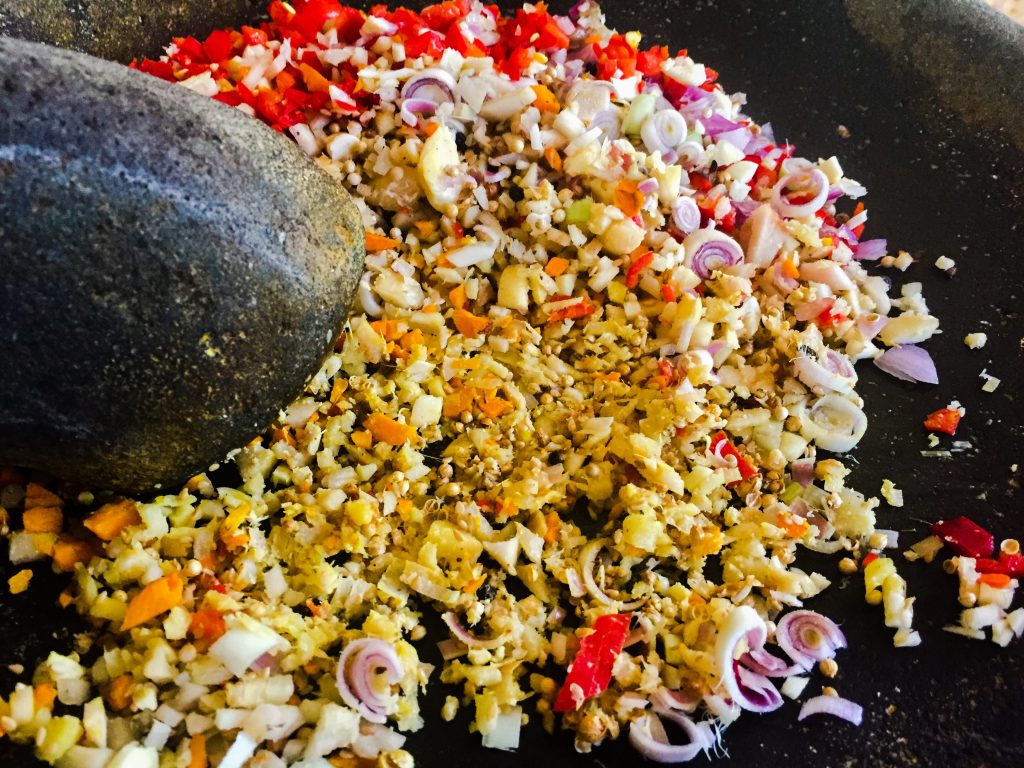
KELAPA
Coconut… coconut is used for its bactericidal, antioxidant, antiparasitic, and Immunostimulatory properties. Once ripe, the coconut contains many vitamins, minerals and trace elements, essential nutrients for the organism. It brings calcium, magnesium, phosphorus, iron, sodium, selenium, iodine, zinc, fluorine and manganese, among others.
TABIA KRINYI
Small red chili… The smallest red pepper but the most powerful. It contains a lot of vitamin C. The rougeest chili pepper is particularly well endowed with carotenoids. It is a powerful antioxidant. Red peppers are also rich in capsaicin, this substance responsible for the pungent flavor of chilies. It can irritate your skin and your mucous membranes but it is thanks to this molecule that we give to the chilies its slimming virtues! Rinse your hands well after cooking.
Thanks to Yukde, Janet de Neefe and all Casa Luna staff
for this wonderful discovery !
